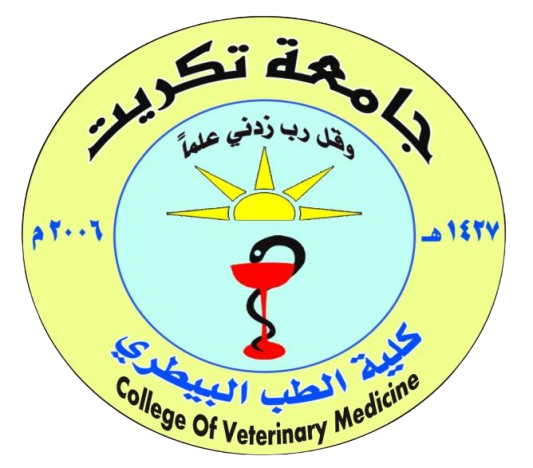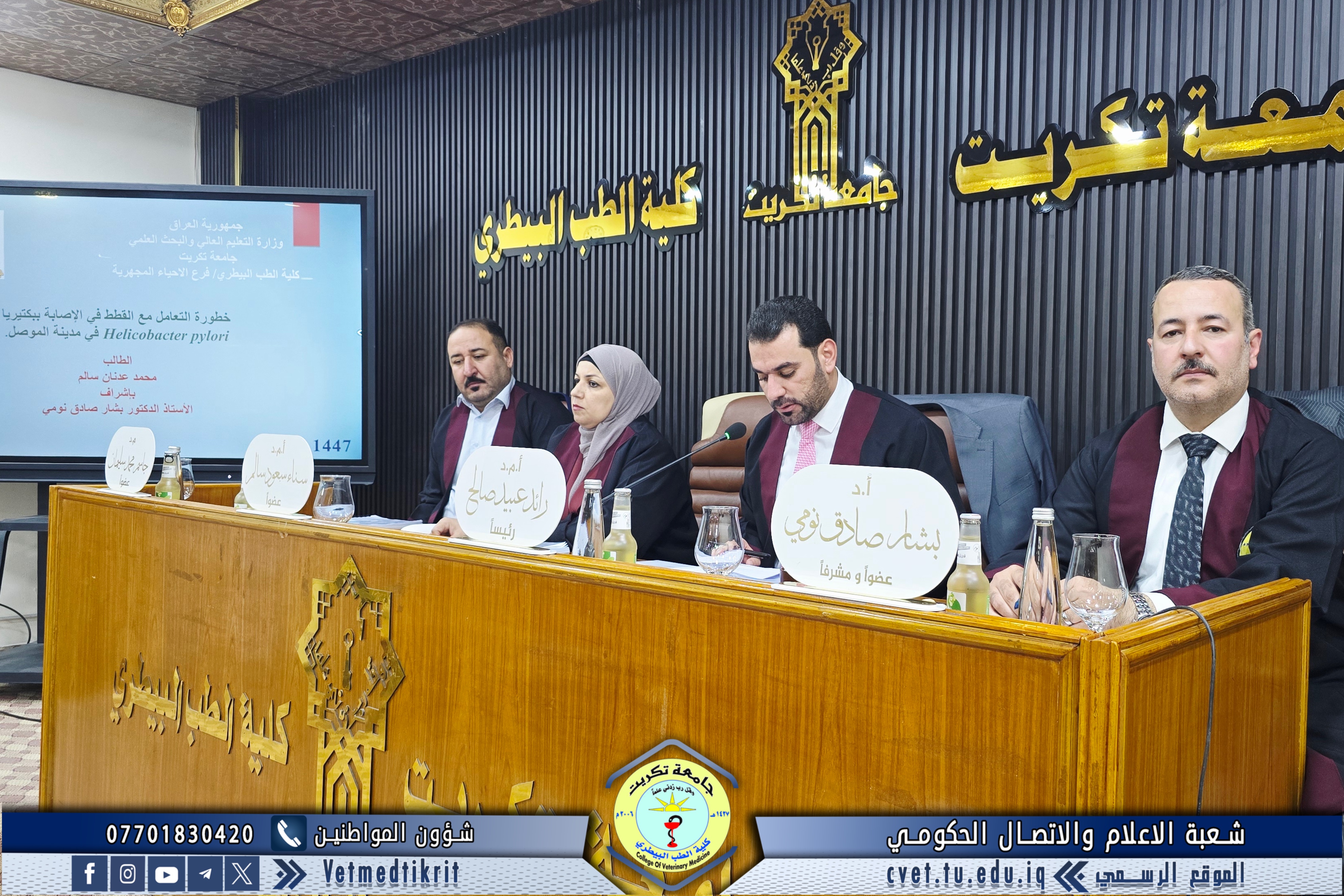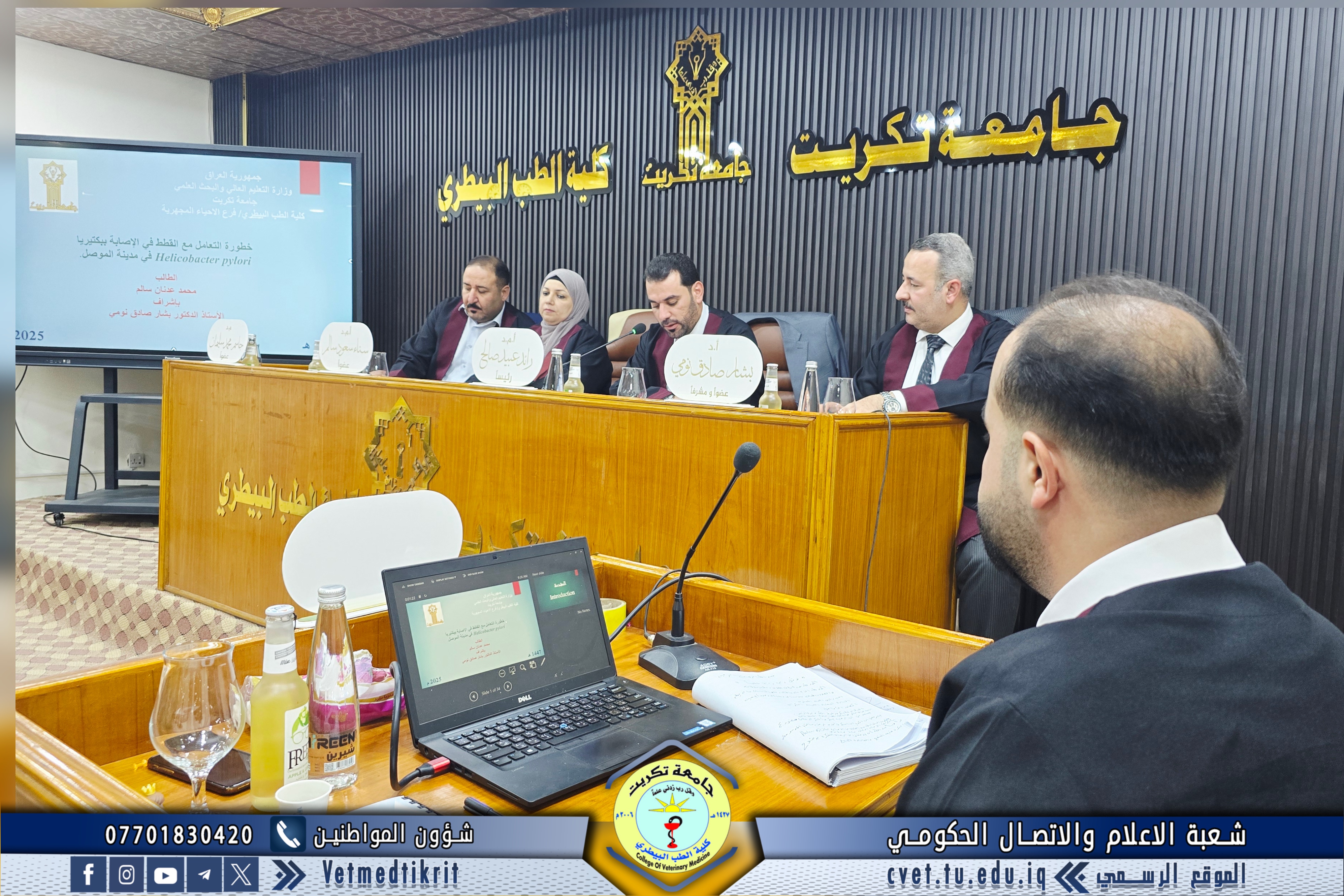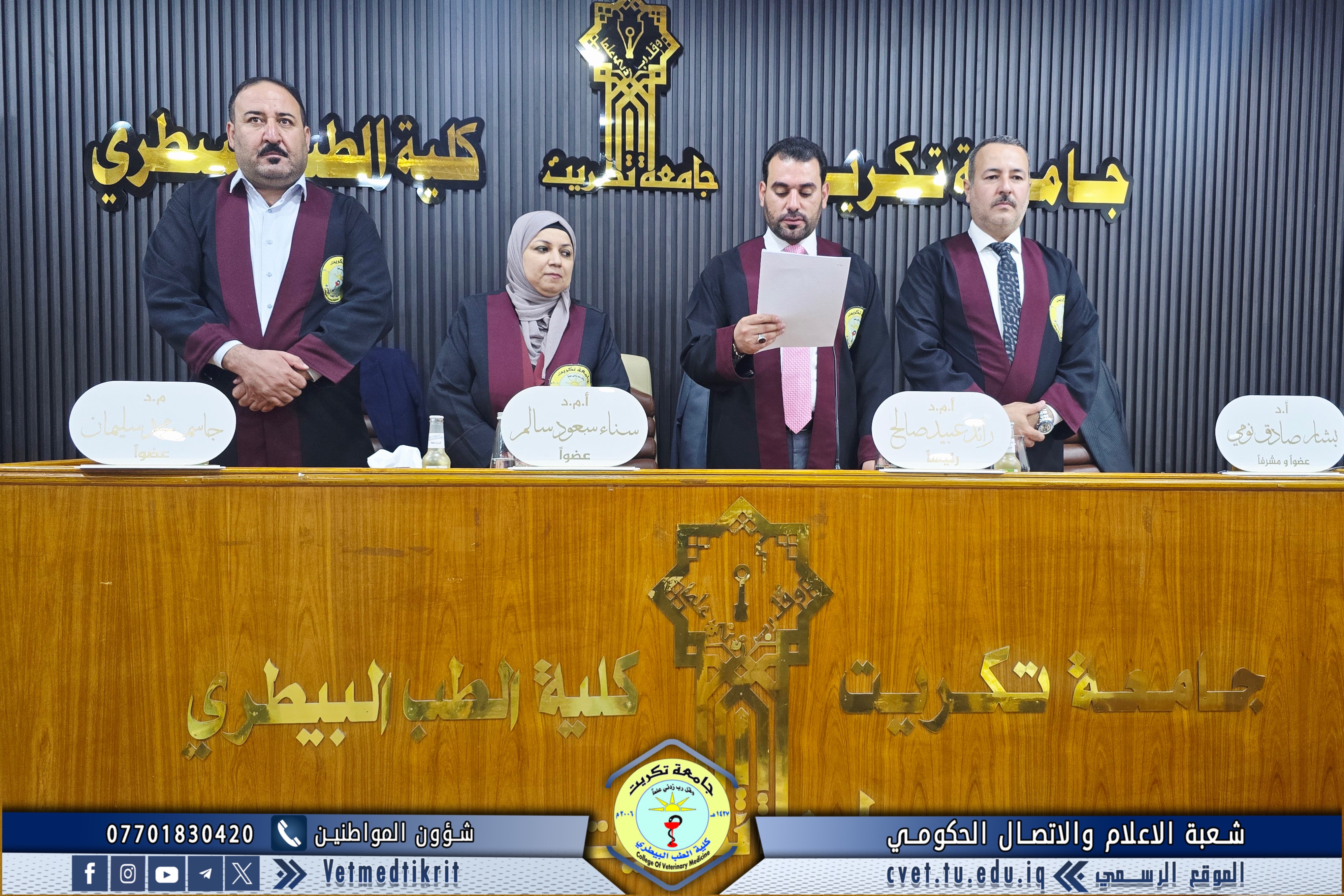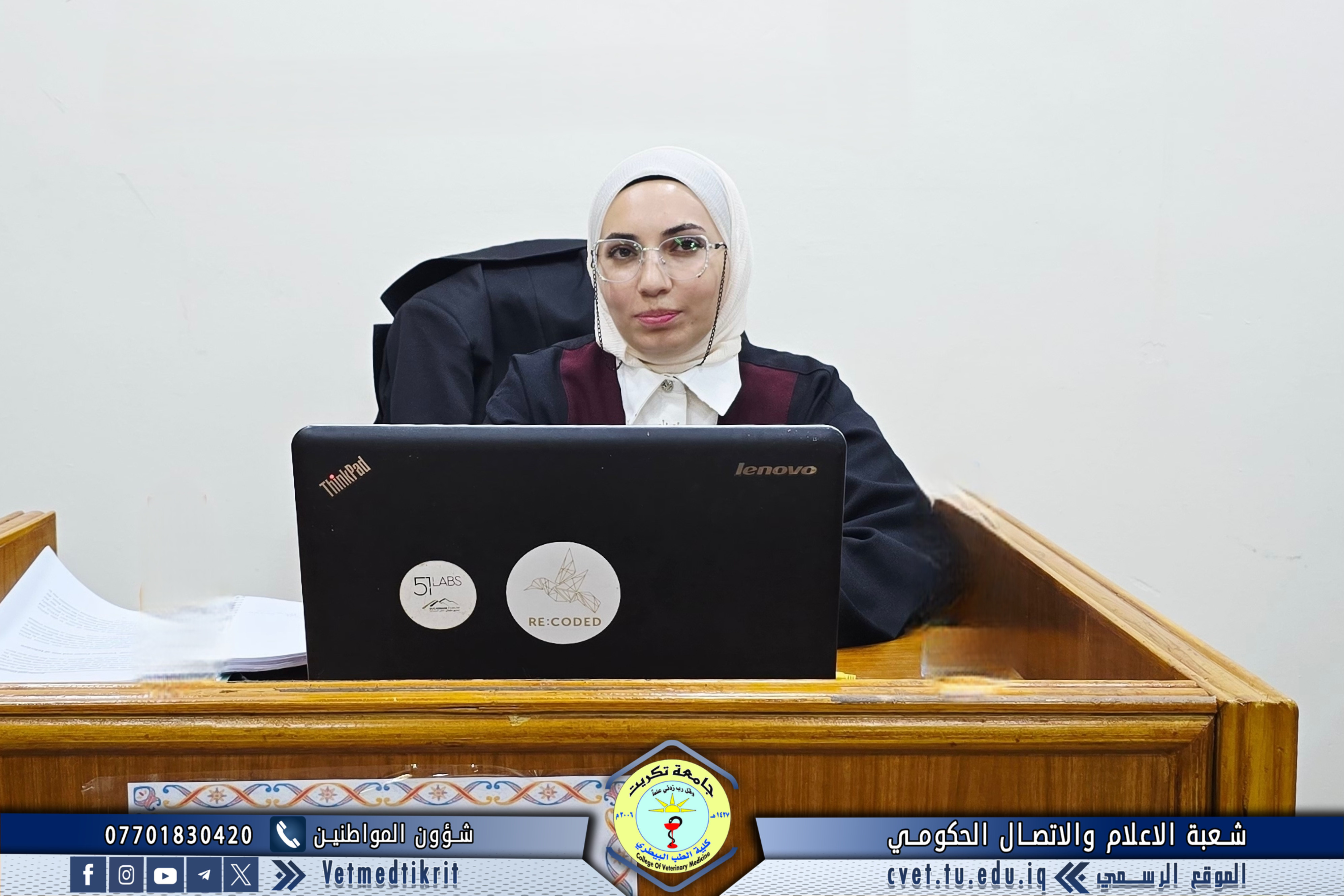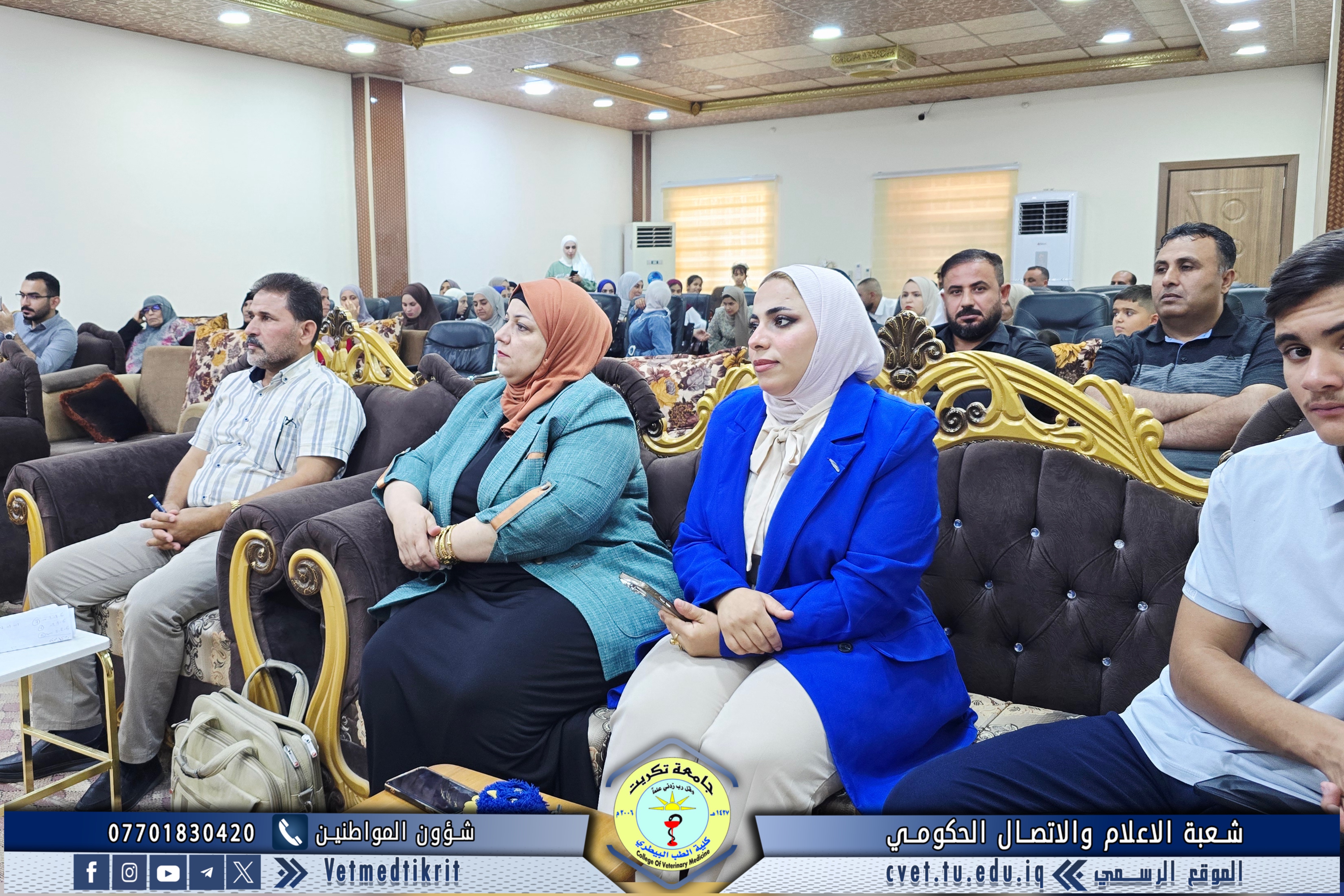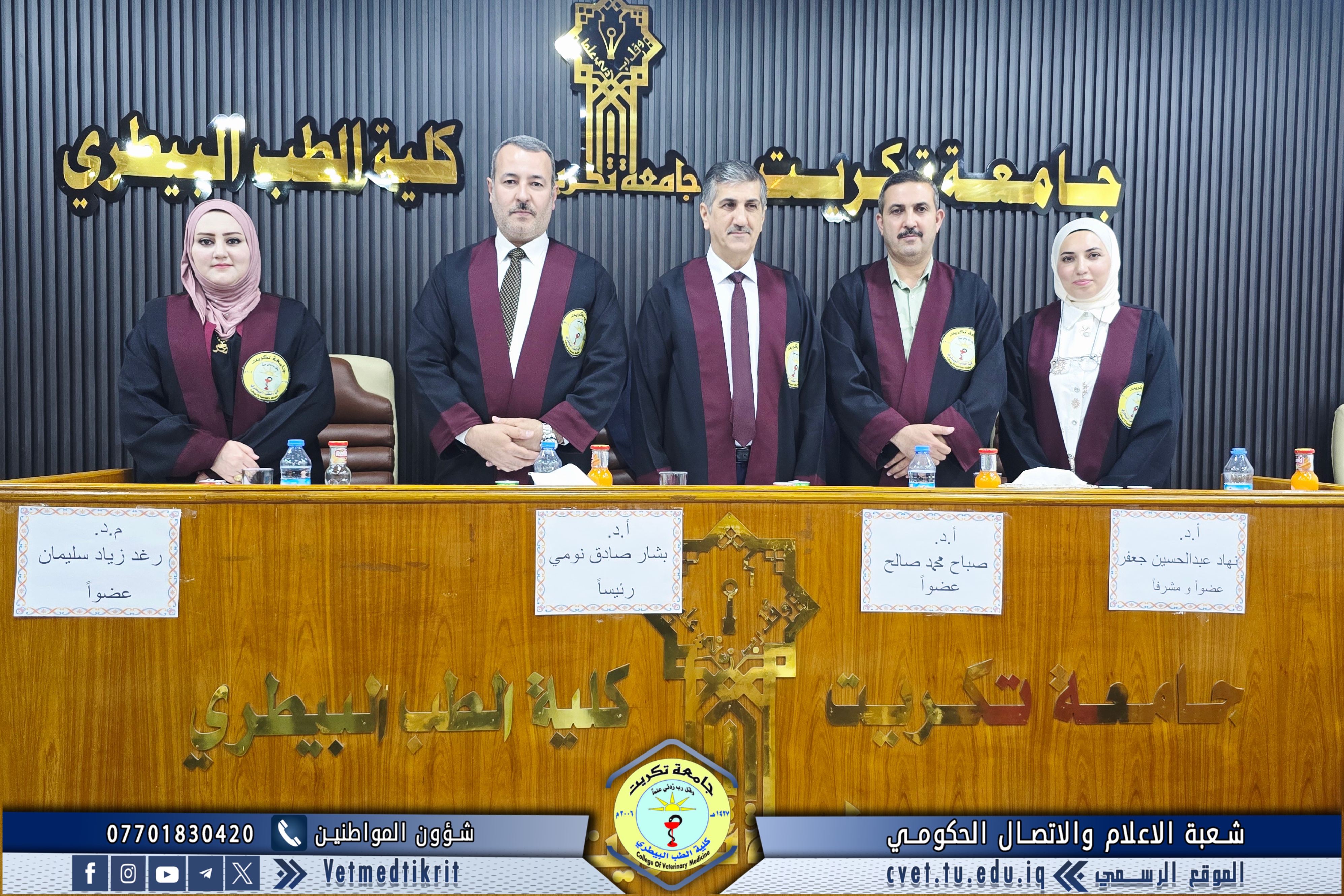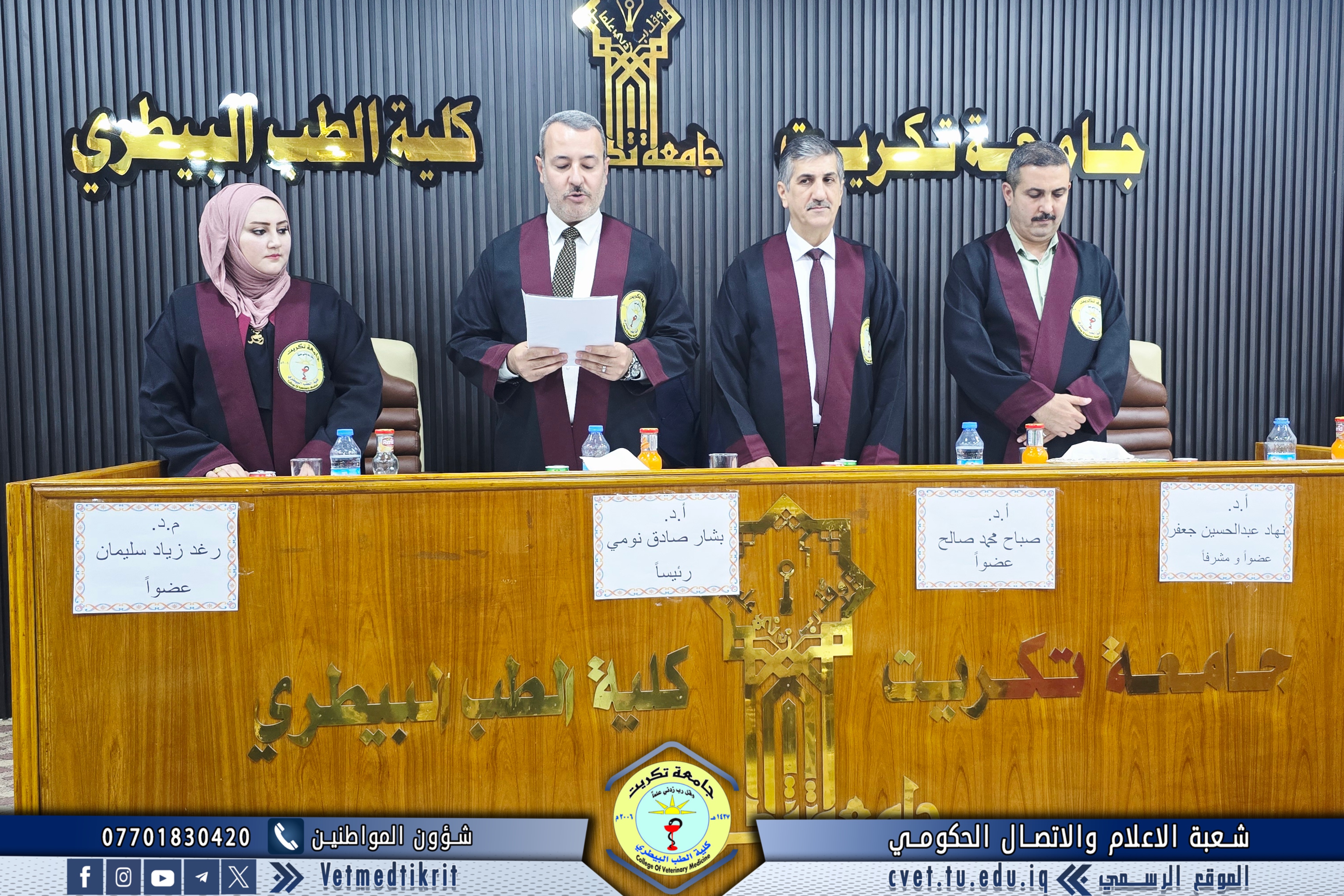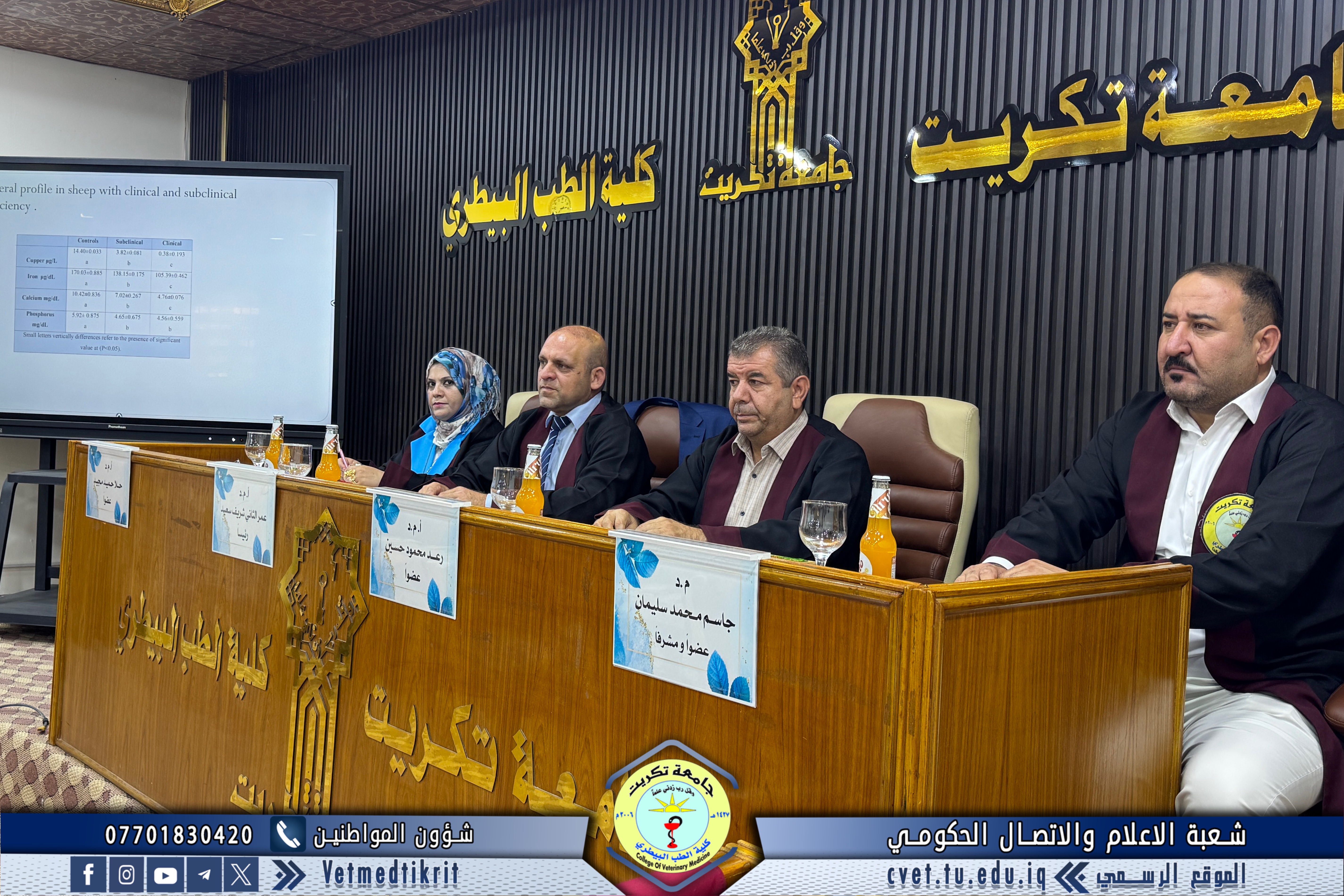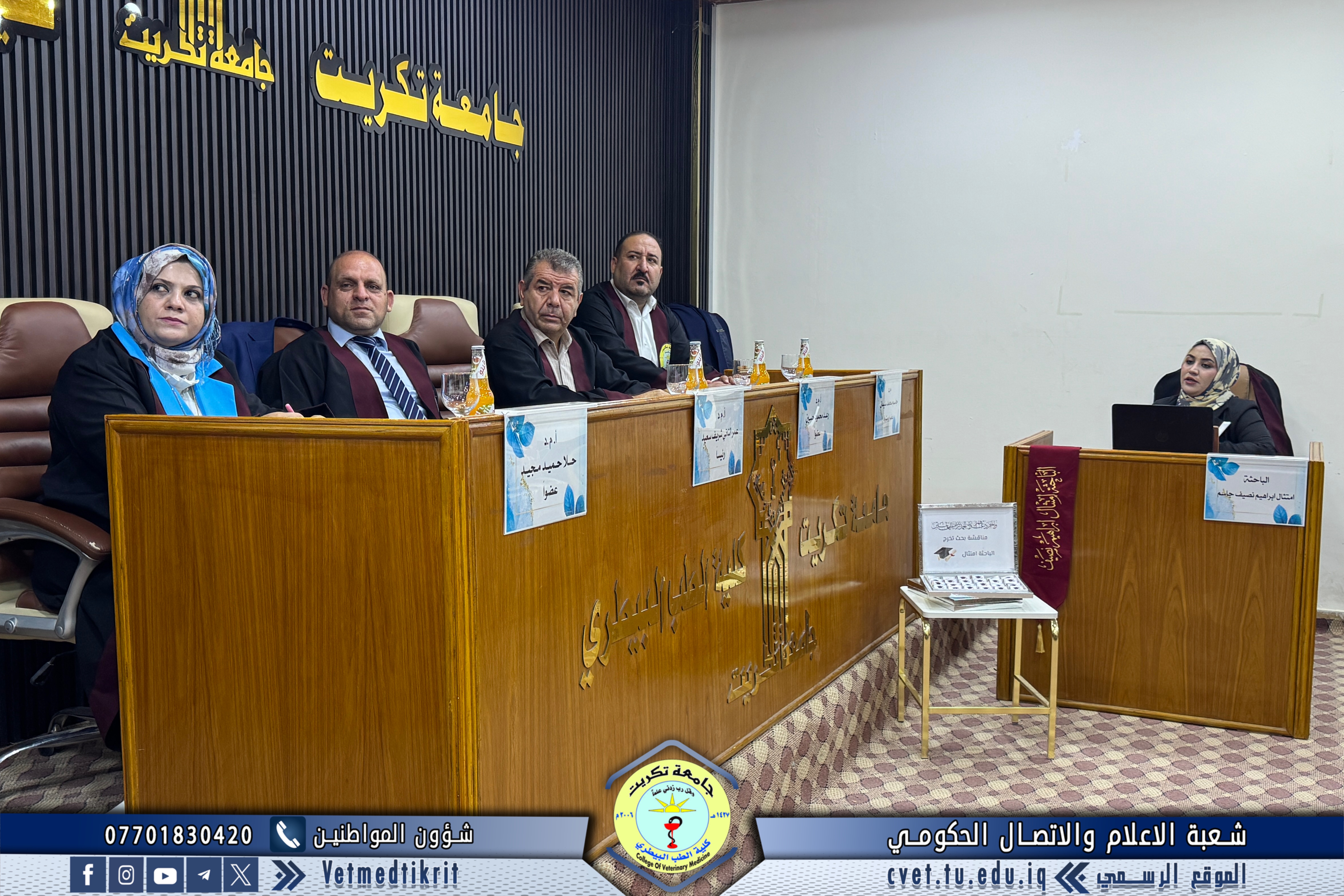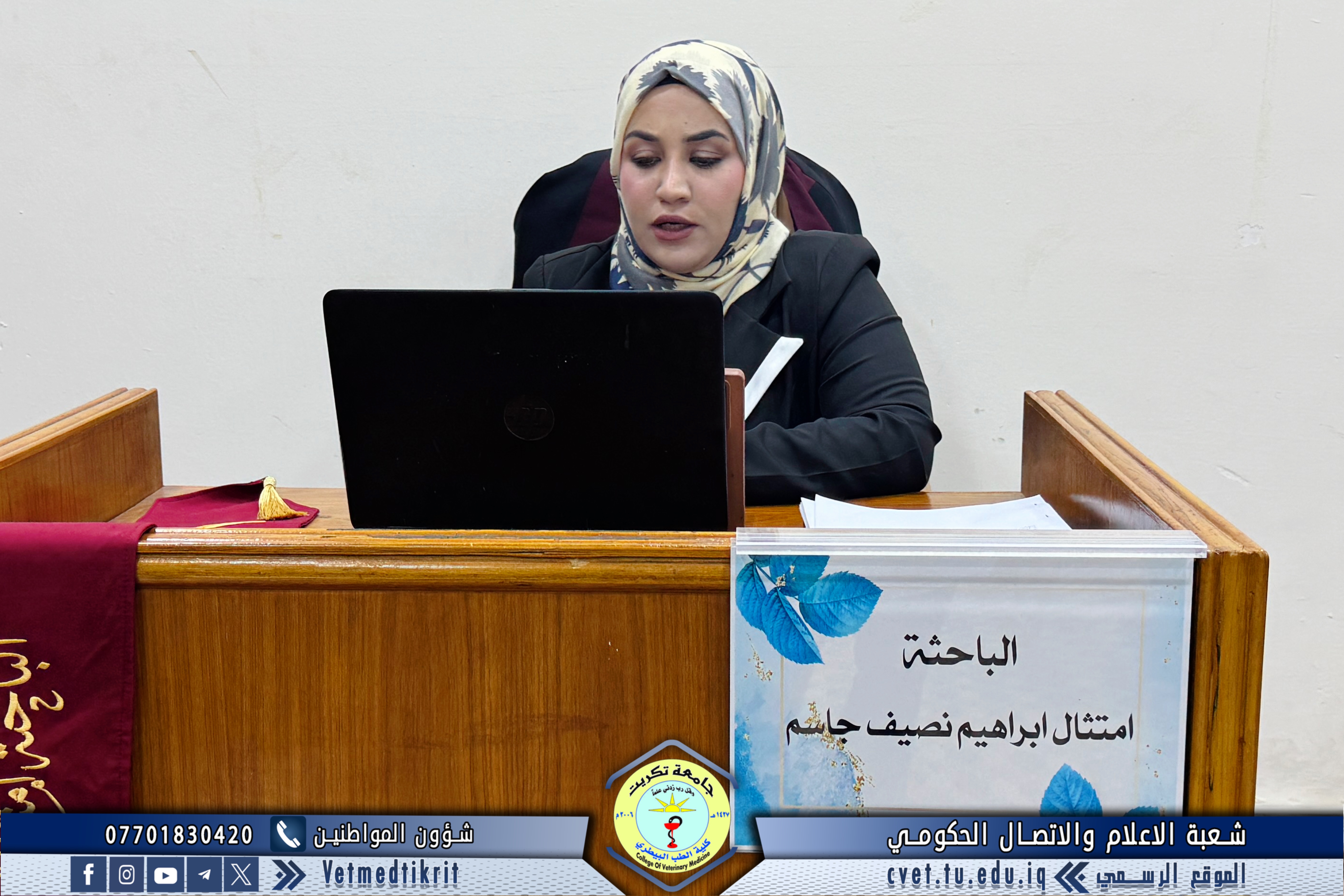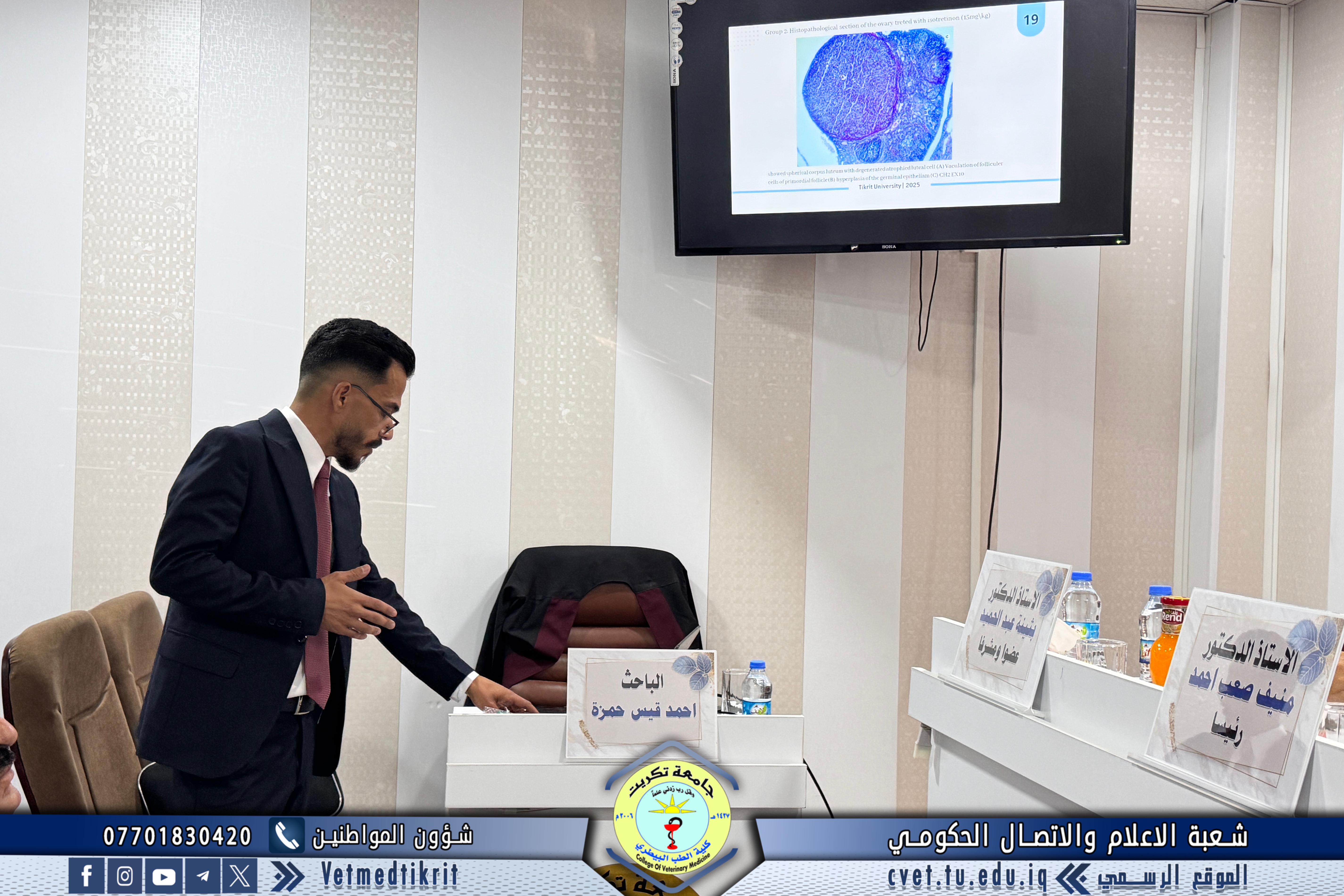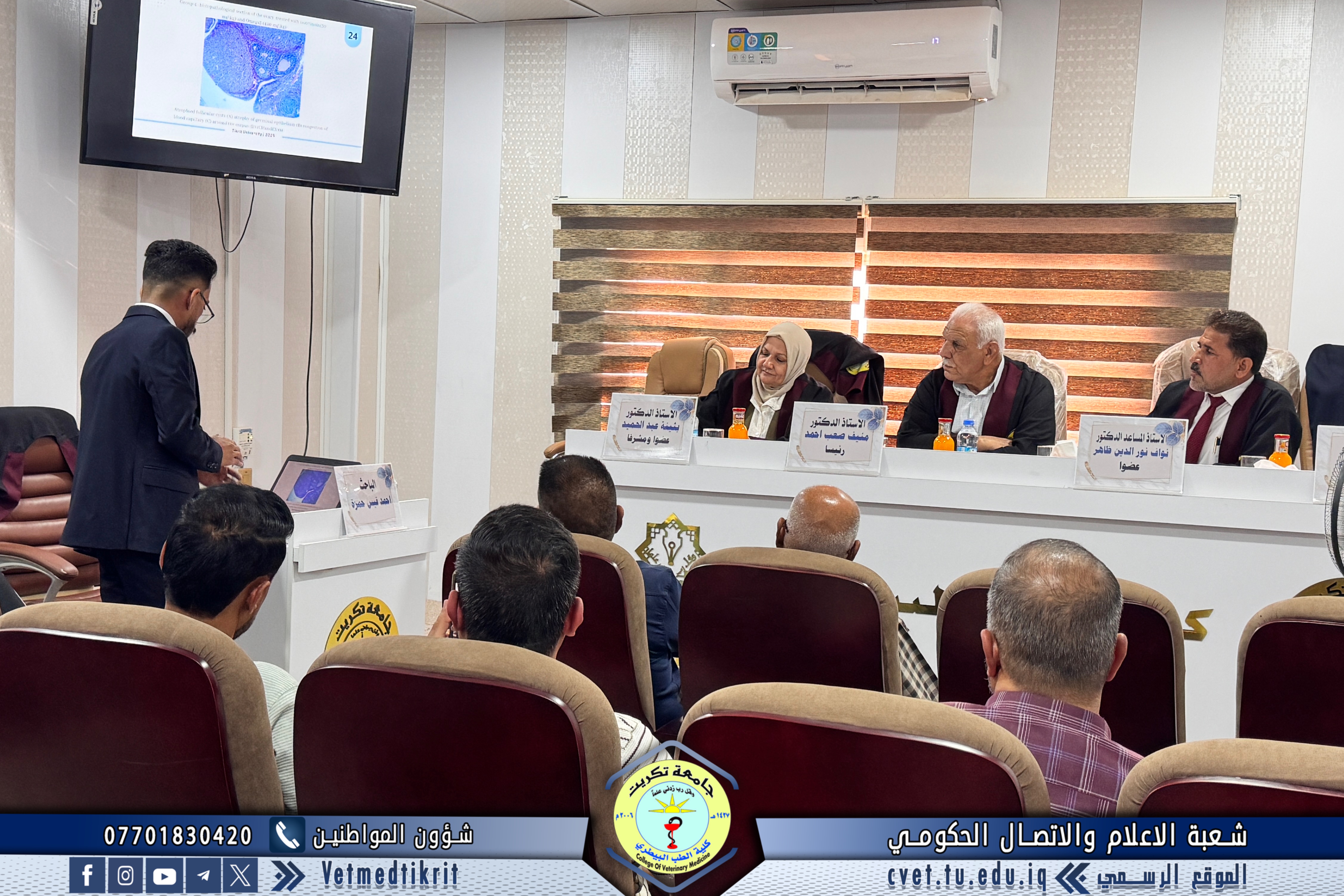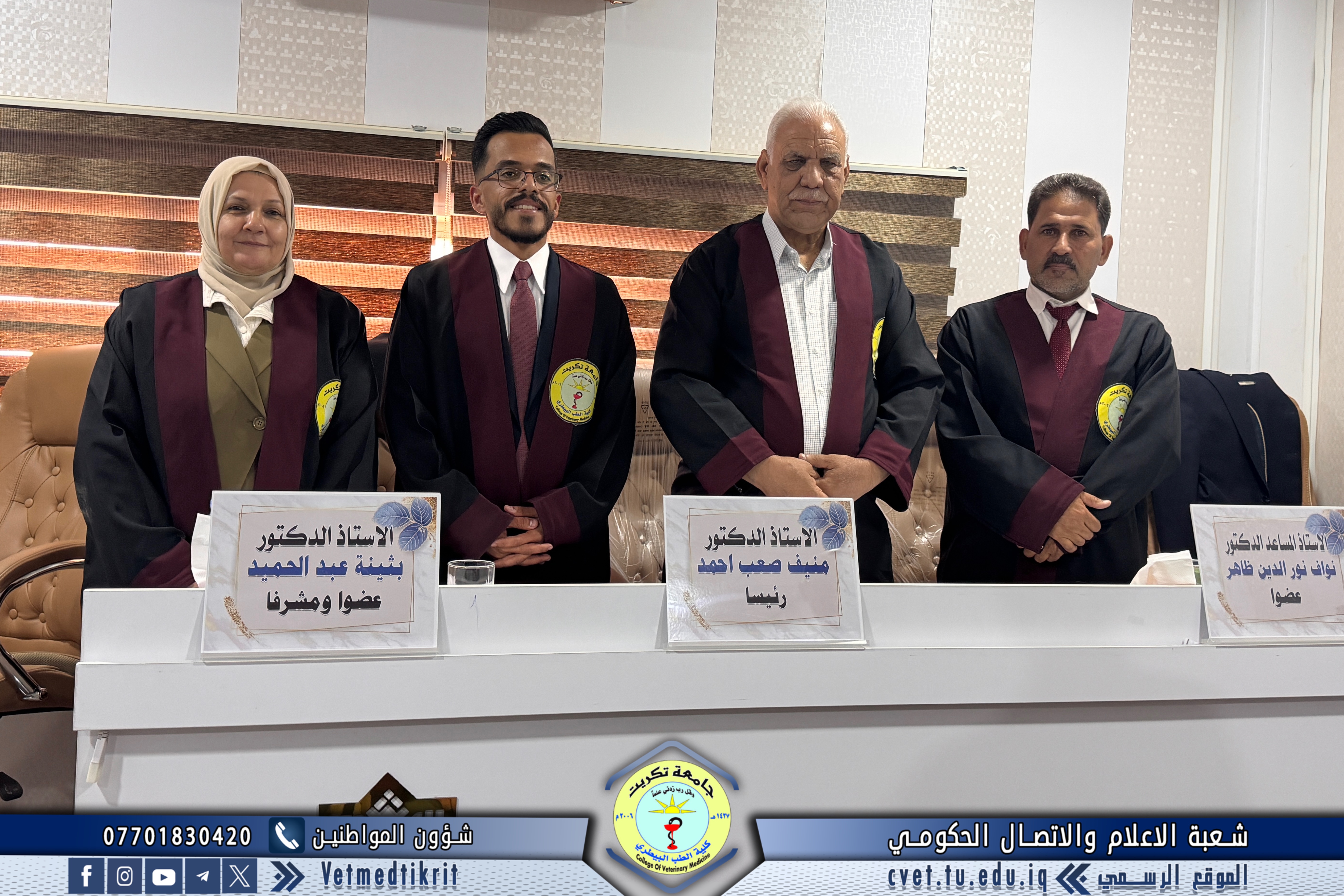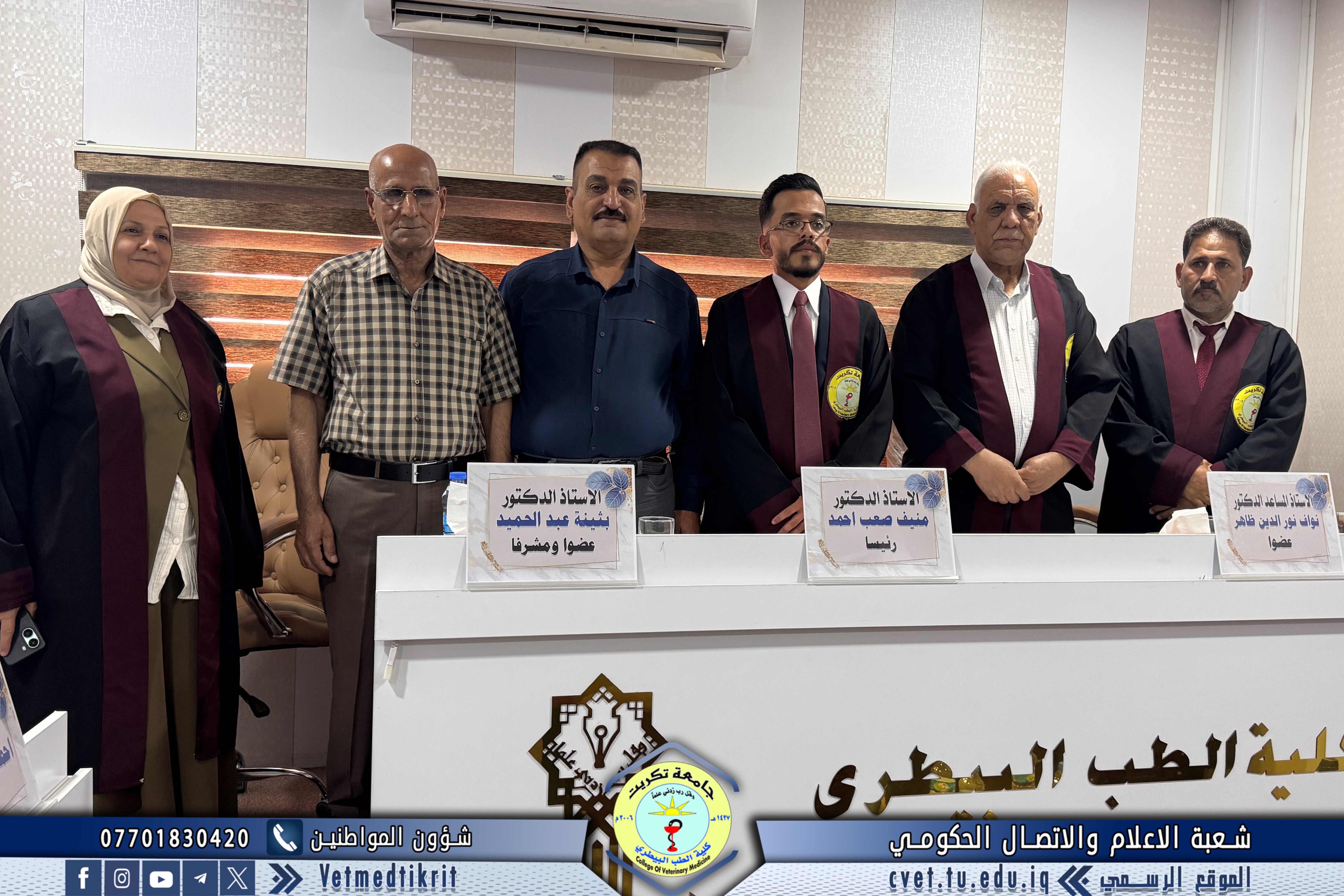By the grace of God, the Master's thesis entitled "The Dangers of Handling Cats in Helicobacter pylori Infection in Mosul" was discussed by the student (Mohammed Adnan Salem Qasim) majoring in (Microbiology) at the College of Veterinary Medicine at Tikrit University. The discussion committee consisted of:
- Assistant Professor Dr. Raed Obaid Saleh / Specialization in Pathogenic Bacteria / Al-Maarif University - College of Health and Medical Technology / Chair
- Assistant Professor Dr. Sana Saud Ahmed / Specialization in Microbiology / Tikrit University - College of Veterinary Medicine / Member
- Assistant Professor Dr. Jassim Muhammad Sulaiman / Specialization in Internal and Preventive Medicine / Tikrit University - College of Veterinary Medicine / Member
- Professor Dr. Bashar Sadiq Noumi / Specialization in Immunology and Bacterial Diagnosis / Tikrit University - College of Veterinary Medicine / Member and Supervisor
The summary of the thesis was as follows:
120 fecal samples were collected from humans between October 2024 and March 2025. Participants' ages ranged from 19–69 years, based on the questionnaire administered. In addition, 25 fecal samples were collected from cats suspected of being infected. The study included the use of a set of immunological diagnostic tests to detect the presence of Helicobacter pylori and analyze the community composition. Bacterial infection using metagenomic techniques was investigated. The results were as follows: Of the 60 blood samples tested by the RAbT antibody test, 33 were positive (55%) and 27 were negative (45%), while the fecal antigen test (SAT) was positive in 38 out of 60 samples (63.3%) and 22 negative (36.7%). Analyzing the results by gender, the positivity rate among males was 15 out of 28 (53.6%) and females was 23 out of 32 (71.9%). The age distribution showed that the 19–34 age group (35 patients) had the highest positivity rate, at 25 samples (71.5%), followed by the 34–49 age group at 50%, and then the 49–69 age group at 57.1%. When comparing cat owners and non-cat owners, the SAT test results showed that the cat owners group had 73.4% positive results, while the non-cat owners had 53.3%, suggesting a possible association between cat ownership and H. pylori infection. The rapid urease test (RUT) results showed that 36 out of 60 samples were positive (60.7%) and 24 negative (39.3%). Molecular diagnosis using polymerase chain reaction (PCR) showed that 8 out of 40 samples were positive (20%), of which 6 were identical to strains found in NCBI (15%) and 2 were not identical to any known strain. In the cat samples, 7 out of 25 samples were positive (28%) and 18 negative (72%). PCR was used in the study as an accurate diagnostic tool to confirm the presence of Helicobacter pylori and determine the genetic relationship between human and feline samples. Genetic primers specific to a portion of the 23sRNA gene were used. 40 stool samples were analyzed, with 8 positive samples (20%), 6 of which matched 15% of the strains in the NCBI database, and 2 samples did not match any previously known strain. The results demonstrated that molecular diagnostics can accurately identify the presence of H. pylori or its relatives, such as Helicobacter canis and Helicobacter winghamensis. The study also showed that some of the strains detected in humans were identical to those found in cats, supporting the hypothesis of cross-species transmission, especially in shared household environments. Metagenomic analysis of the stool samples identified 174 different bacterial species in cats and more than 361 species in humans. The most prominent species was Prevotella copri, whose proportion increased to 36.4% in sample A1 and 21.7% in sample A2. Faecalibacterium prausnitzii: 7.2–8.7% in humans and 7.65% in cats. Roseburia spp.: 0.02–0.03% in humans and 1.3–1.5% in cats. Some species associated with bacterial dysbiosis or inflammatory diseases have also been observed, such as: Sutterella wadsworthensis: 6.1–6.12% in cats. Fusobacterium mortiferum: 0.94% in cats. Clostridium perfringens: 0.1% in humans and 1.1% in cats. Campylobacter helveticus: 0.6% in humans and 0.06% in cats. Helicobacter pylori: 0.00099% in humans and 0.32–0.05% in cats. Alloprevotella spp. 2.6% in humans and 15.6% in cats. Other species were also recorded, such as Helicobacter canis, Helicobacter winghamensis, Collinsella aerofaciens, and Blautia spp. Heat mapping and hierarchical clustering revealed a clear similarity in the bacterial composition between humans and cats, particularly in species associated with diet or intestinal metabolism. However, differences emerged in the abundance of some harmful bacteria, such as Sutterella spp. and Fusobacterium spp., which were more common in cats, suggesting their potential role in bacterial imbalance or gastrointestinal diseases. Concluding the study, it can be concluded that Helicobacter pylori is present in cat samples, albeit at low levels. There is genetic similarity between some strains in humans and cats, which supports the idea of cross-species transmission (zoonotic transmission), especially in shared household environments. This could have a significant health impact on cat owners.
The discussion, which was held in Dr. Muhannad Maher Hall at the College of Veterinary Medicine, was attended by a number of female and male faculty members and a group of students.
